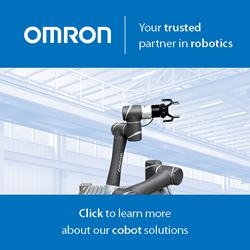How Commercial Robotics Could Improve the Inventory and Shipping Crisis of 2021
.jpg)
The global shipping crisis is disrupting all facets of commerce, from materials suppliers to manufacturers to retailers, but robotics may be able to alleviate the tension. Ever since the COVID-19 pandemic set in throughout the world in 2020, supply chains have been disrupting virtually every industry from top to bottom. Numerous factors are contributing to the issue, so finding a solution that can mitigate the strain on the supply chain is challenging.
Cargo ships are being loaded to maximum capacity, which increases the risk of them being damaged at sea due to high winds or waves. When these ships, containing upwards of 20,000 shipping containers, make it to port, they can take well over a week to unload, creating congestion at ports. A national shortage of truck drivers in the U.S. increases the difficulty of domestic transportation of goods, even after they are unloaded at ports.
Finally, warehouses and manufacturing facilities are running at maximum capacity, struggling to catch up with demand, especially as importing goods becomes increasingly more difficult.
All of these factors have built up to a supply chain crisis that seems at times insurmountable. However, commercial robotics has exceptional potential to improve the situation at numerous points in the supply chain.
IoT and AI
The Internet of Things (IoT) and artificial intelligence (AI) are among the world’s most cutting-edge technologies that are finally going mainstream. IoT has already become a versatile asset in warehouses and manufacturing facilities due to its cost-saving and efficiency-boosting capabilities. It can be implemented in the quality control process, inventory management, onboarding for new employees, and asset tracking, among numerous other applications.
Robotic systems can be given a new level of intelligence and smart automation abilities with the addition of IoT and AI, enabling them to help meet demand by filling a critical labor shortage in numerous industries. The labor shortage has been a key motivator for the rise of robotic process automation, which also enhances efficiency and productivity.
For example, RFID technology can be used to track inventory in warehouses and distribution centers, which is highly useful on its own. RFID technology also enables robotic inventory management, though, where a commercial robot autonomously picks and transports units using RFID tags on packaging and shelving.
Inventory management strategies like this are especially useful since they can help businesses and manufacturers get ahead of supply chain shortages and delays through intelligent inventory forecasting. This strategy has already proven effective in action, allowing many companies to continue growing even amid the current shipping crisis.
Autonomous Vehicles
As mentioned above, one of the problems crippling the supply chain, particularly within the U.S., is the national shortage of truck drivers. Estimates put the shortage at over 80,000 drivers as of late 2021. Things are even worse in the U.K., where the shortage is estimated at 100,000 drivers. Demand has never been higher for some sort of solution to this issue, which has been on the rise for several years, well before the onset of the COVID-19 pandemic.
Autonomous vehicles may be the key to giving the trucking industry the support it desperately needs to meet a demand level that only continues to grow. While autonomous trucks are not yet ready for the mainstream, a few are in development and the key limiting factor at this point is improving AI prediction accuracy on the road.
Trucks are not the only vehicles that can be automated in the supply chain. Potentially accelerated by the shipping crisis, fully autonomous cargo ships are taking to the seas already, with the world’s first crewless, zero-emissions ship setting off from Norway in August 2021.
In addition to the ships themselves, autonomous vehicles around ports could prove useful as well, though there is less demand for them. Ports in L.A., for example, have enough workers to operate 24/7, so this particular phase of the process is less strained from labor shortages. Nonetheless, automated hauling vehicles or unloading machinery could potentially help speed up the process of unloading cargo ships and thus reduce congestion at ports.
Waste Reduction
As mentioned above, robotics, IoT, and AI are all excellent for optimizing and automating numerous facets of the supply chain. One of the key benefits of those applications is waste reduction. This refers to reducing wasted materials and resources as well as the waste produced by the production process. With materials becoming increasingly difficult to obtain, each unit becomes more valuable. This increases the need to maximize the usage of every resource available and minimize waste as much as possible.
For example, using commercial robotics to automate the production process or quality control can drastically reduce the cost of human error while also boosting efficiency. When fewer units are damaged or incorrectly assembled, manufacturers are able to ship out more products to customers, solving at least one point of congestion in the supply chain.
One resource that all too often goes to waste is time. For some manufacturing facilities and warehouses, operating around the clock may not seem like an option. However, enabling 24/7 operation does not have to mean reducing quality of life for workers. Robotics can be used to run operations, at least in part, during off-peak hours. The goal of efficient 24/7 operation is being pursued by some of the world’s largest brands, such as Walmart, as many seek to keep up with Amazon’s cutting-edge example.
Meeting the Moment With Robotics
Experts have been predicting the rise of automation and commercial robotics for years, but it is no longer a fringe idea. Robotics has the potential to take the global supply chain to levels of productivity and efficiency that once would have been unthinkable. The shipping crisis presents an opportunity for commercial robotics to come of age and revolutionize the supply chain when the world needs it most.
Comments (0)
This post does not have any comments. Be the first to leave a comment below.
Featured Product

